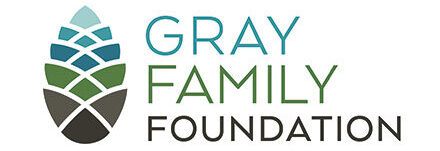Great things are happening at Hood River Middle School, where a program called Food and Conservation Science (FACS) is thriving in a LEED Platinum, net-zero building complete with a native plant garden, 1,000-foot glasshouse, ponds and trails.
Through cooking, gardening and permaculture design, FACS teaches students about science and natural resources in a hands-on way. The only thing missing was art.
“We have been constantly trying to figure out, how do we mix science and art together and go from STEM to STEAM?” says Michael Becker, an instructor who has developed the FACS program over more than a decade ago at Hood River Middle School. For Michael, the answer kept coming back to connecting students to the Columbia River, right on their doorstep.
With support from the Gray Family Foundation, the middle school set out on a grand vision: To design a large, ceramic-tile mural that serves as a scale model of the Columbia River system, from its source in British Columbia to the Pacific Ocean. Leading this vision was a team including Michael Becker, tile mosaic artist Toms Royal and HRMS art teachers Ann McDonald and Jennifer Wilson.
To accomplish the massive mural, teachers assigned teams of students each a five-foot panel, which represents forty miles of the landscape. Starting from sketched plans, students researched facts about their assigned river reach, including native animals, first nations tribes, industries, natural and recreational resources. Then each team painted ceramic tiles to represent their river reach, and they fired the tiles in a wood kiln right on campus.
Michael says the “The River Mile Project” is demonstrating how geography can be a common curricular approach for every subject, from math to music to art.
“We are building this thing that’s really beautiful that encompasses all of the disciplines of our school,” he says.
Working alongside a professional filmmaker, students are also creating dozens of stop-motion videos about the animals illustrated in the panels, complete with original scores composed by band students. When you scan a QR code on the artwork, it will link to the videos for people to view.
In the project’s second year, students have completed two-thirds of the 34 panels needed to model the entire Columbia system. When it is completed in 2020, the mural will include 7,000 pieces of tile in all.
“Everybody that comes into the building will walk past them,” Michael says. “We want people to be on this site and have a geographic experience about the river.”
Gray Family Foundation support went toward art materials, after-school programs, staffing, snacks, field trips to see natural areas, and even plants for the native garden, which has sections to represent different plant communities of the Columbia Gorge.
“There’s just no way we could have done this without the [GFF] coordinating funds to be able to have all the materials.”
